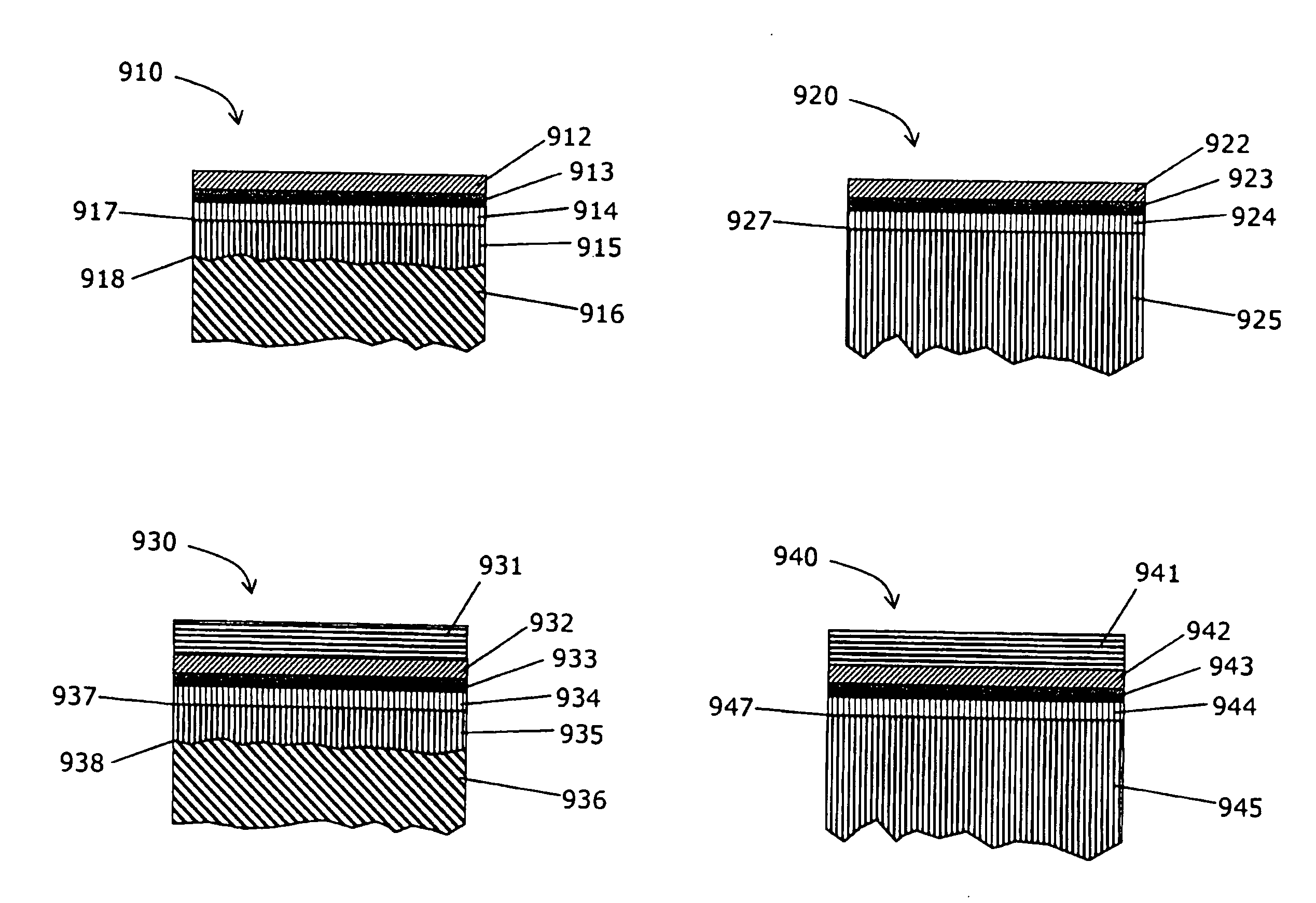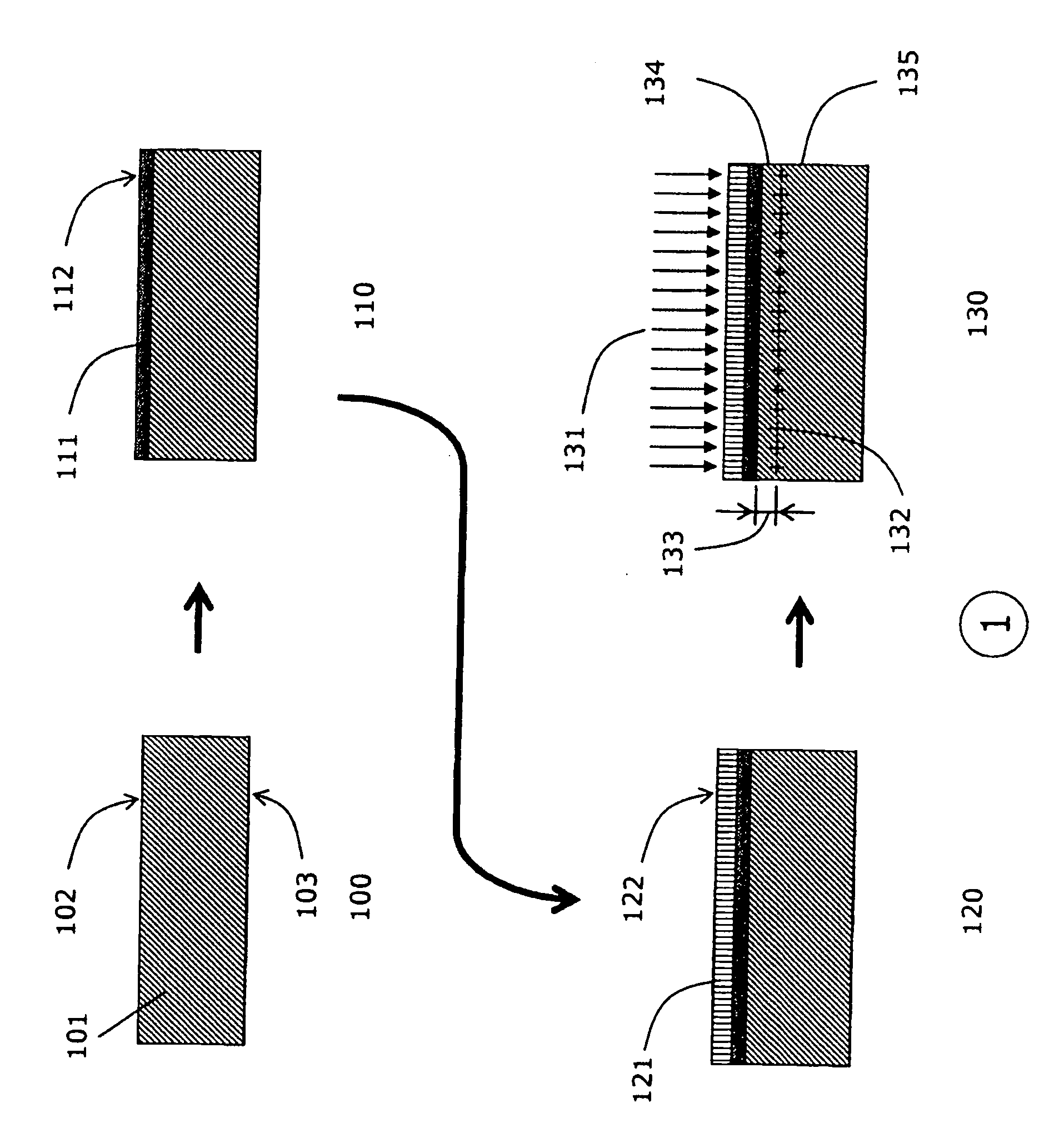Composite wafers having bulk-quality semiconductor layers and method of manufacturing thereof
a technology of semiconductor layers and composite wafers, which is applied in the direction of layered products, radiation intensity measurement, transportation and packaging, etc., can solve the problems of limited wafer availability or and achieve the effect of limited wafer availability and high cost of bulk wafers
- Summary
- Abstract
- Description
- Claims
- Application Information
AI Technical Summary
Benefits of technology
Problems solved by technology
Method used
Image
Examples
Embodiment Construction
[0047]The preferred process according to this invention and various embodiments comprise of the following step described below and illustrated in FIGS. 1, 2 and 3. The process flow is given in FIG. 7a.
[0048]The first embodiment of the preferred method is illustrated in FIG. 7a and described more specifically in FIG. 1: In step 100 of FIG. 1, a bulk gallium nitride wafer 101 is provided. The wafer 101 has a planar surface 102 and whose plane is either substantially parallel or slightly inclined with respect to one of the principal crystallographic planes of a single-crystal semiconductor material.
[0049]In the next step 110, the surface 102 of the gallium nitride substrate is prepared for diamond nucleation by depositing a layer 111. This requires high adhesion. Hence, surface 102 is prepared by polishing. The preferred root-mean-square roughness of surface 102 is at least 1 nm. The surface preparation required in this step 110 is equivalent to the one described in the last steps of ...
PUM
 Login to View More
Login to View More Abstract
Description
Claims
Application Information
 Login to View More
Login to View More - R&D
- Intellectual Property
- Life Sciences
- Materials
- Tech Scout
- Unparalleled Data Quality
- Higher Quality Content
- 60% Fewer Hallucinations
Browse by: Latest US Patents, China's latest patents, Technical Efficacy Thesaurus, Application Domain, Technology Topic, Popular Technical Reports.
© 2025 PatSnap. All rights reserved.Legal|Privacy policy|Modern Slavery Act Transparency Statement|Sitemap|About US| Contact US: help@patsnap.com



